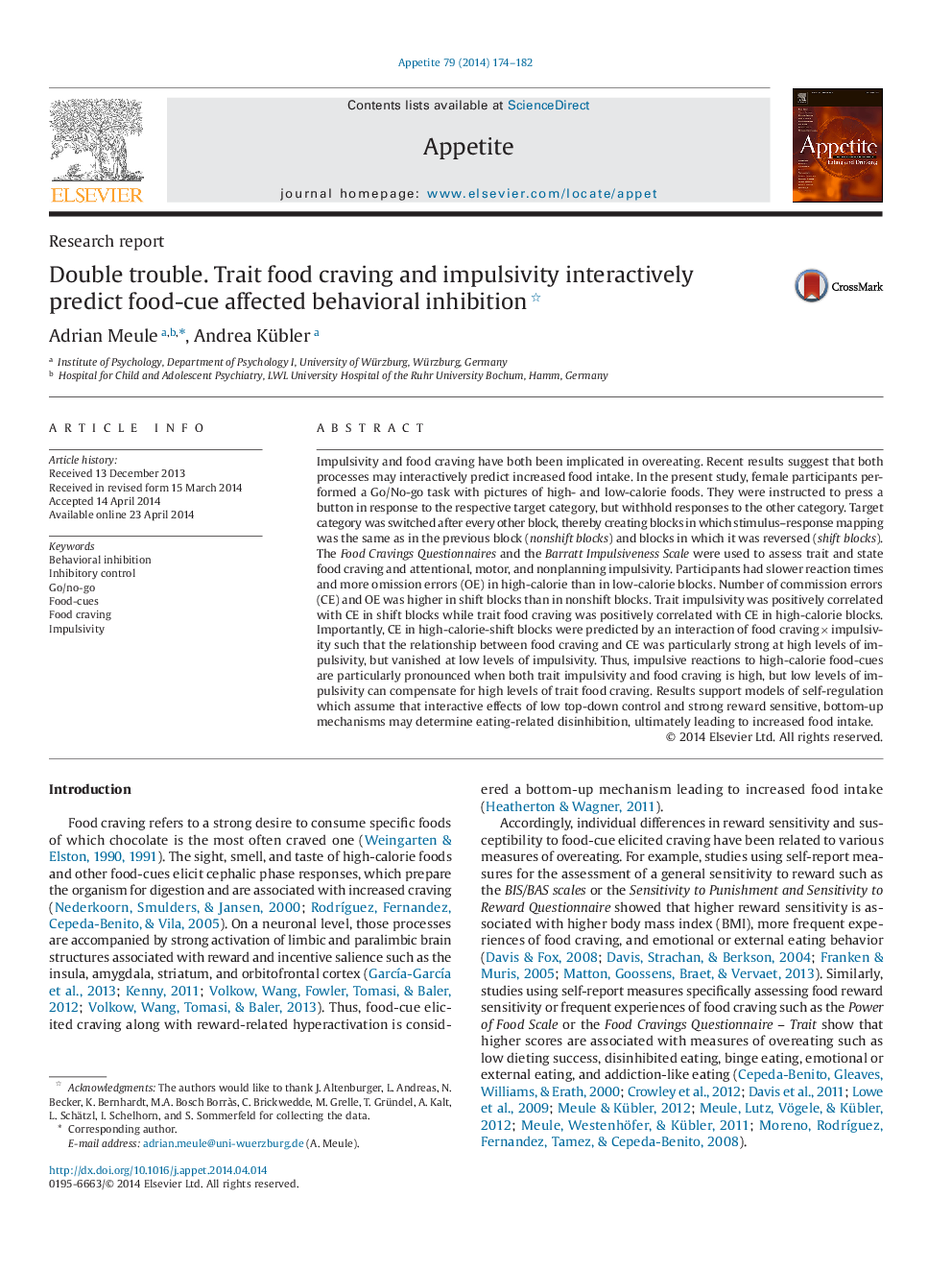| کد مقاله | کد نشریه | سال انتشار | مقاله انگلیسی | نسخه تمام متن |
|---|---|---|---|---|
| 7310102 | 1475401 | 2014 | 9 صفحه PDF | دانلود رایگان |
عنوان انگلیسی مقاله ISI
Double trouble. Trait food craving and impulsivity interactively predict food-cue affected behavioral inhibition
ترجمه فارسی عنوان
دردسر اضافه. اشتیاق غذایی و تکانشی بودن غذا به طور تعاملی پیشگیری از مهار رفتاری تحت تأثیر مواد غذایی است
دانلود مقاله + سفارش ترجمه
دانلود مقاله ISI انگلیسی
رایگان برای ایرانیان
کلمات کلیدی
مهار رفتاری، کنترل مهار، برو / نه برو، نشانه های غذا، اشتیاق غذایی، تکانشی،
موضوعات مرتبط
علوم زیستی و بیوفناوری
علوم کشاورزی و بیولوژیک
دانش تغذیه
چکیده انگلیسی
Impulsivity and food craving have both been implicated in overeating. Recent results suggest that both processes may interactively predict increased food intake. In the present study, female participants performed a Go/No-go task with pictures of high- and low-calorie foods. They were instructed to press a button in response to the respective target category, but withhold responses to the other category. Target category was switched after every other block, thereby creating blocks in which stimulus-response mapping was the same as in the previous block (nonshift blocks) and blocks in which it was reversed (shift blocks). The Food Cravings Questionnaires and the Barratt Impulsiveness Scale were used to assess trait and state food craving and attentional, motor, and nonplanning impulsivity. Participants had slower reaction times and more omission errors (OE) in high-calorie than in low-calorie blocks. Number of commission errors (CE) and OE was higher in shift blocks than in nonshift blocks. Trait impulsivity was positively correlated with CE in shift blocks while trait food craving was positively correlated with CE in high-calorie blocks. Importantly, CE in high-calorie-shift blocks were predicted by an interaction of food cravingâÃâimpulsivity such that the relationship between food craving and CE was particularly strong at high levels of impulsivity, but vanished at low levels of impulsivity. Thus, impulsive reactions to high-calorie food-cues are particularly pronounced when both trait impulsivity and food craving is high, but low levels of impulsivity can compensate for high levels of trait food craving. Results support models of self-regulation which assume that interactive effects of low top-down control and strong reward sensitive, bottom-up mechanisms may determine eating-related disinhibition, ultimately leading to increased food intake.
ناشر
Database: Elsevier - ScienceDirect (ساینس دایرکت)
Journal: Appetite - Volume 79, 1 August 2014, Pages 174-182
Journal: Appetite - Volume 79, 1 August 2014, Pages 174-182
نویسندگان
Adrian Meule, Andrea Kübler,
